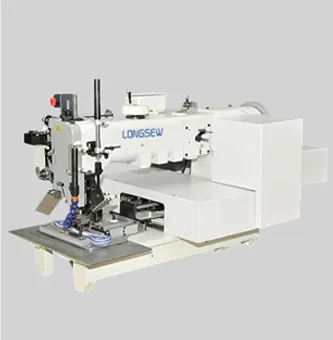industrial overlock machine price
Understanding the Price of Industrial Overlock Machines
In the world of textile manufacturing, industrial overlock machines play a crucial role in achieving high-quality and durable seams. These machines are designed to efficiently finish the edges of fabric and prevent fraying, making them indispensable in garment production, upholstery, and various other sectors. As businesses look to invest in these machines, understanding the factors that influence the price of industrial overlock machines becomes essential.
Key Features Influencing Price
Several key features significantly impact the pricing of industrial overlock machines.
1. Type of Machine There are various types of overlock machines, including 2-thread, 3-thread, and 4-thread systems. Generally, a 4-thread overlock machine offers the most versatility and is more expensive than its 2-thread and 3-thread counterparts. Machines designed for specific applications, such as flatlock or safety stitch machines, may also command higher prices.
2. Speed and Efficiency Industrial overlock machines are designed for high-speed operation. Machines that can sew at higher stitches per minute (SPM) typically come with a higher price tag due to their efficiency and productivity potential. Manufacturers may charge more for machines that boast advanced speed features, allowing businesses to meet their production targets faster.
3. Brand Reputation Renowned brands in the industrial sewing machine market, such as Juki, Brother, and Bernina, tend to have higher prices due to their commitment to quality, reliability, and customer support. Brands that are known for durability and advanced technology often justify their prices with superior performance and longevity.
4. Build Quality and Materials The materials used in construction can also affect the price. Machines made with high-quality metals, premium bearings, and durable plastics tend to be more expensive. Investing in a solidly built machine can lead to lower maintenance costs and increased lifespan, ultimately resulting in better returns on investment.
5. Technology and Features Modern overlock machines may come equipped with advanced features such as automatic tension control, touch screens, programmable settings, and built-in safety mechanisms. Such advancements facilitate ease of use and higher productivity but also increase the overall cost.
industrial overlock machine price

Price Range Overview
The price of industrial overlock machines can vary widely based on the mentioned factors. On the lower end, basic models suitable for light industrial use may start at around $300 to $600. These machines are often ideal for small businesses or home industries specializing in limited garment production.
Mid-range machines, which may offer more features and durability, can typically be found in the price bracket of $600 to $1,500. These models are suitable for larger production runs and are favored by small to medium-sized garment manufacturers.
At the higher end, premium industrial overlock machines may range from $1,500 to $5,000 or more. These machines are often equipped with cutting-edge technology, making them ideal for large manufacturing facilities that require speed, efficiency, and durability. Investing in high-end machines can lead to significant cost savings in production efficiency over time.
Additional Costs to Consider
When budgeting for an industrial overlock machine, it’s important to consider additional costs that may arise. These can include shipping fees, installation charges, and maintenance costs. Moreover, businesses may need to purchase additional attachments, tools, or accessories, which can also add to the overall expenditure.
Conclusion
The price of industrial overlock machines is influenced by a multitude of factors, including machine type, speed, brand reputation, materials, and technological features. Understanding these elements can help businesses make informed purchasing decisions based on their specific production needs and budget constraints.
Investing wisely in an overlock machine can significantly enhance productivity and product quality, ultimately contributing to a company’s success in the competitive textile market. As always, conducting thorough research and comparing different models can lead to the best choice in alignment with your manufacturing goals.
-
Boost Production Efficiency with a Pattern Sewing MachineNewsAug.29,2025
-
Industrial Excellence with the Best Heavy Duty Sewing MachineNewsAug.29,2025
-
Precision and Power with the Best Pattern Sewing MachineNewsAug.29,2025
-
Reliable Bulk Packaging Starts With the Right FIBC Sewing MachineNewsAug.29,2025
-
Advanced Packaging Solutions: Elevate Productivity with Jumbo Bag Sewing Machine and Industrial Stitching EquipmentNewsAug.29,2025
-
High-Performance Solutions for Bulk Packaging: FIBC Sewing Machine and MoreNewsAug.29,2025
-
Maximize Efficiency with an Industrial Cylinder Arm Sewing MachineNewsAug.28,2025


























